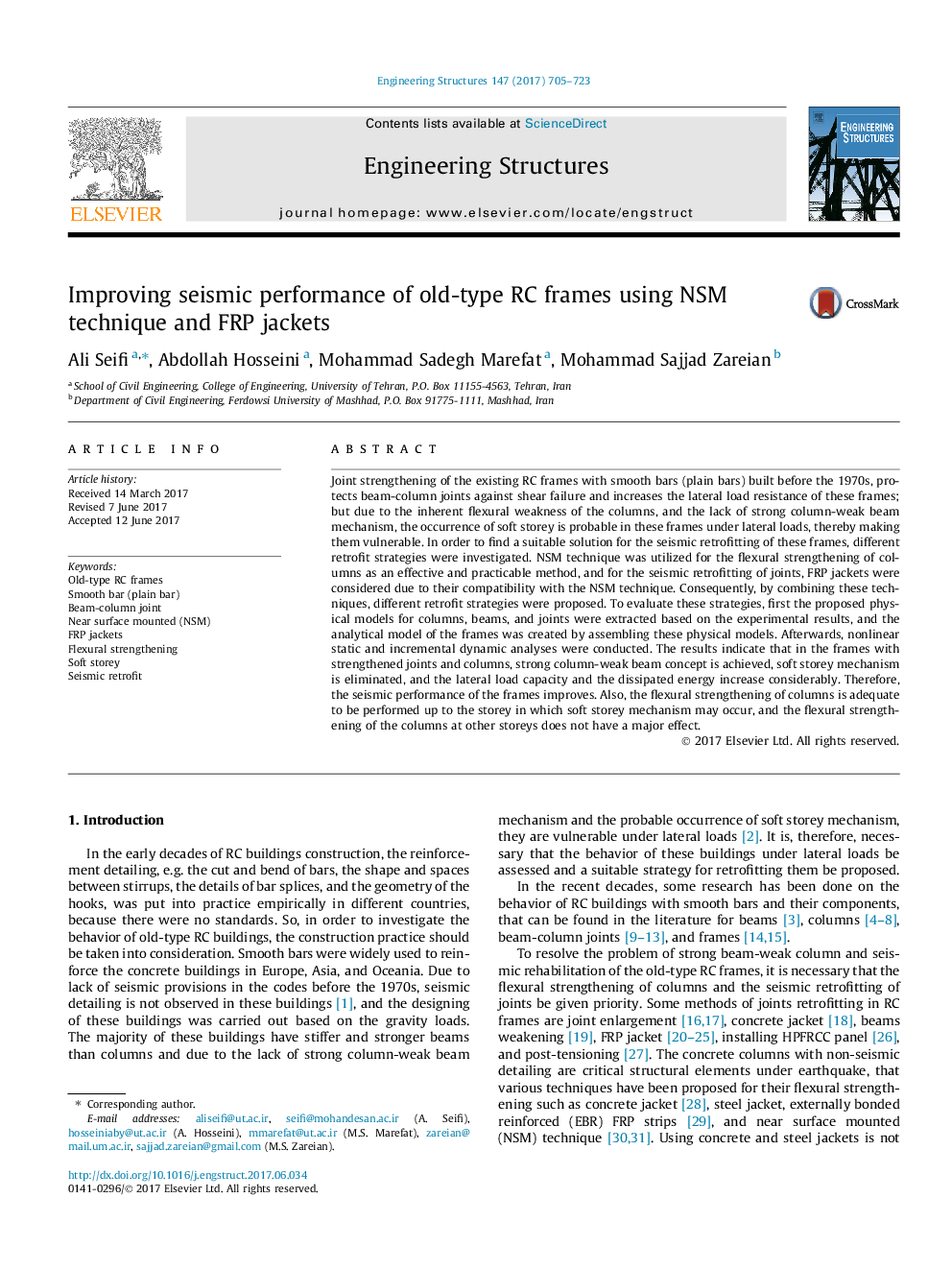| Article ID | Journal | Published Year | Pages | File Type |
|---|---|---|---|---|
| 4919942 | Engineering Structures | 2017 | 19 Pages |
Abstract
Joint strengthening of the existing RC frames with smooth bars (plain bars) built before the 1970s, protects beam-column joints against shear failure and increases the lateral load resistance of these frames; but due to the inherent flexural weakness of the columns, and the lack of strong column-weak beam mechanism, the occurrence of soft storey is probable in these frames under lateral loads, thereby making them vulnerable. In order to find a suitable solution for the seismic retrofitting of these frames, different retrofit strategies were investigated. NSM technique was utilized for the flexural strengthening of columns as an effective and practicable method, and for the seismic retrofitting of joints, FRP jackets were considered due to their compatibility with the NSM technique. Consequently, by combining these techniques, different retrofit strategies were proposed. To evaluate these strategies, first the proposed physical models for columns, beams, and joints were extracted based on the experimental results, and the analytical model of the frames was created by assembling these physical models. Afterwards, nonlinear static and incremental dynamic analyses were conducted. The results indicate that in the frames with strengthened joints and columns, strong column-weak beam concept is achieved, soft storey mechanism is eliminated, and the lateral load capacity and the dissipated energy increase considerably. Therefore, the seismic performance of the frames improves. Also, the flexural strengthening of columns is adequate to be performed up to the storey in which soft storey mechanism may occur, and the flexural strengthening of the columns at other storeys does not have a major effect.
Keywords
Related Topics
Physical Sciences and Engineering
Earth and Planetary Sciences
Geotechnical Engineering and Engineering Geology
Authors
Ali Seifi, Abdollah Hosseini, Mohammad Sadegh Marefat, Mohammad Sajjad Zareian,
